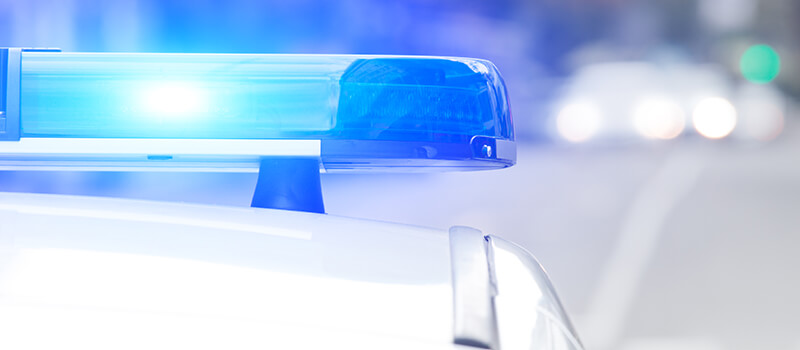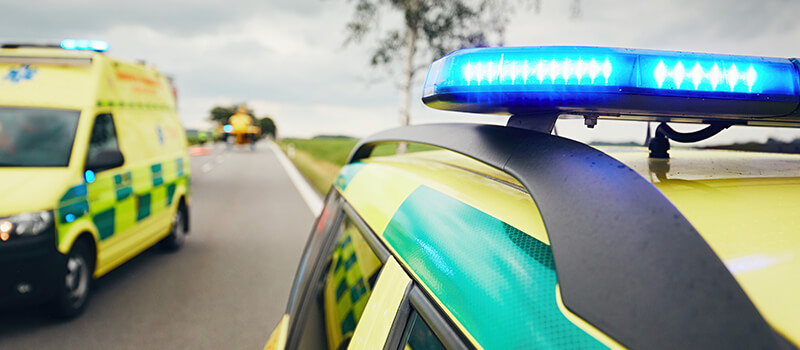During driving lessons, there is only so much your instructor can teach you through hypothetical situations, the ‘what if’ scenarios rather than directly facing issues and practically understanding how to react. Unless these particular circumstances occur, there is no real way of practising the process of how to react. One obvious example of situations you cannot quite understand until you are faced with it is what to do if an emergency vehicle such as an ambulance or police approaches behind you and needs to pass through. There are many rules for pulling over for emergency vehicles you must make yourself aware in preparation.
Understanding The Rules For Pulling Over For Emergency Vehicles
In the rare instance that you will be required to move over or slow down to let an emergency vehicle pass, it is understandable if at first, you feel a slight panic. Situations in which you must think fast, methodically and safely can be tricky to take on when you have no practice. Luckily, we’ve devised a set of the essential points to remember along with how to recognise the type of emergency.
What Types Of Emergency Vehicles Are There?
Many different types of vehicles are classed as emergency vehicles; some are considerably more common than others. Ambulance, police cars and fire engines are all types that we are more than aware of and can easily be recognised if they approach us while on the roads. However, organisations such as bomb disposal units, the national blood service and coastguards are also classed as emergency services team.

What Do The Different Colour Lights Mean?
A blue flashing light along with a siren indicates that the vehicle is on an emergency call and you must give way to let the driver pass. Both police officers and paramedics make use of these common signals. It is only when you notice blue lights and a siren that you must pull over, if an emergency vehicle is on the roads, however, is showing no signals, treat them as a regular driver, you do not need to clear a pathway. Legally, emergency services can only switch on their lights and sirens if they have been called to an incident and need to arrive at the destination as soon as possible. If they are merely driving from A to B, they must use the road as if they were a regular driver.
Now and again, you may notice a car with a green light present; this is a doctor who has been sent on an emergency call out.
Lastly, is an amber light. You do not need to pull over for an amber light as it is, instead, informing you that there is a potential hazard ahead. A vehicle such as gritters in the Winter and breakdown recovery are likely to use an amber coloured light to alert other road users.
Do Emergency Vehicles Have To Stick To The Law?
Similarly to any other road user, emergency vehicles do have laws they must obey, however, they are a little more lenient to ensure that they can get to their incident in minimal time.
Emergency drivers do not need to stick to the speed limit; they often have a timeframe they must arrive at the emergency location in, so are likely to drive over the limit. In busy traffic, it can often be tricky to manoeuvre through vehicles when there isn’t must room to pass through meaning emergency drivers can drive through a hard shoulder on the motorway and on the right-hand side of the road, if necessary.
Although emergency drivers are legally permitted to break some road laws, there are others they cannot, mainly those that relate to driver safety. Ambulances, police cars or other vehicles cannot drive through a one-way road or a no-entry zone to get to their destination quicker.

How Do I Pull Over For An Emergency Vehicle?
All driving related rules and laws can be found in The Highway Code; this includes the process by which you should react to an emergency vehicle approaching. Rule 219 of The Highway Code states that as a driver, you must always make yourself aware of the possibility of an emergency vehicle. Keep a careful eye out, which means that observation is vital. If you do notice an emergency vehicle behind you or coming towards you, remember these four vital steps:
1. Remain Calm – Do not panic or act irrationally, do not slam on your brakes or emergency brake, act in an orderly manner.
2. Assess The Situation – How many cars are around you? Where is the nearest safe spot to pull over leaving enough room for the driver to indicate? Do you need to pull over or can you simply slow down? Have you checked all of your mirrors and blind spot? Have you turned down your music so you can hear how close the siren is?
3. Continue To Take Action – Start to slow down, indicate if you must move over, move into your safe position, let the vehicle pass.
4. Rejoin The Road – Do not immediately rejoin the road after the emergency vehicle has passed, check all mirrors and blind spots. In many cases, a second emergency vehicle will pass a few seconds after, keep an eye out for this. If the coast is clear, indicate and rejoin.
If you notice an emergency vehicle approaching during driving lessons, do not panic, your instructor will go through this process thoroughly with you. We have had a few instances where pupils taking driving lessons in Oxford have been faced with the task or reacting to a high-speed emergency vehicle. After the situation has been dealt with, we spend time going through the process and reflecting on how the pupils felt, answering all the possible questions they may have.

Always Stick To The Law
Just because emergency drivers are permitted to break particular laws, this doesn’t mean you can. Emergency drivers have taken an advanced driver course, have had to pass exams and taken strict safety training to allow them to drive against the rules while still ensuring that they remain safe and are no danger to other road users.
Keeping calm and following the correct set of steps to reacting to an emergency will ensure that you do not break the law due to a sudden panic. One of the most common problems is new drivers running a red light trying to move away from an emergency vehicle, do not do this. Emergency drivers do not expect you to risk your licence and even your life to let them pass. Remain cool, calm and collected, and we promise that it will not be a nerve-wracking and worrying as you think!
